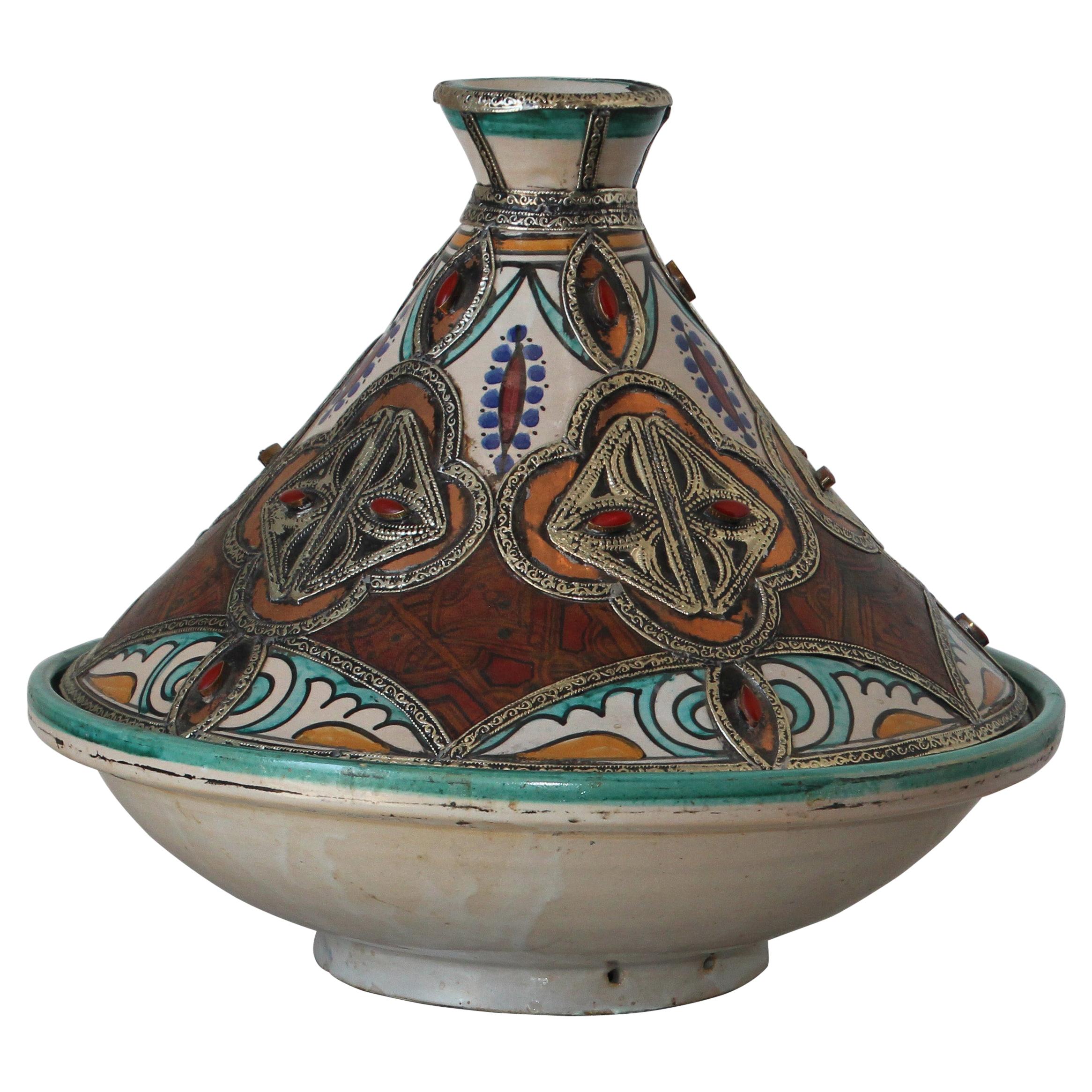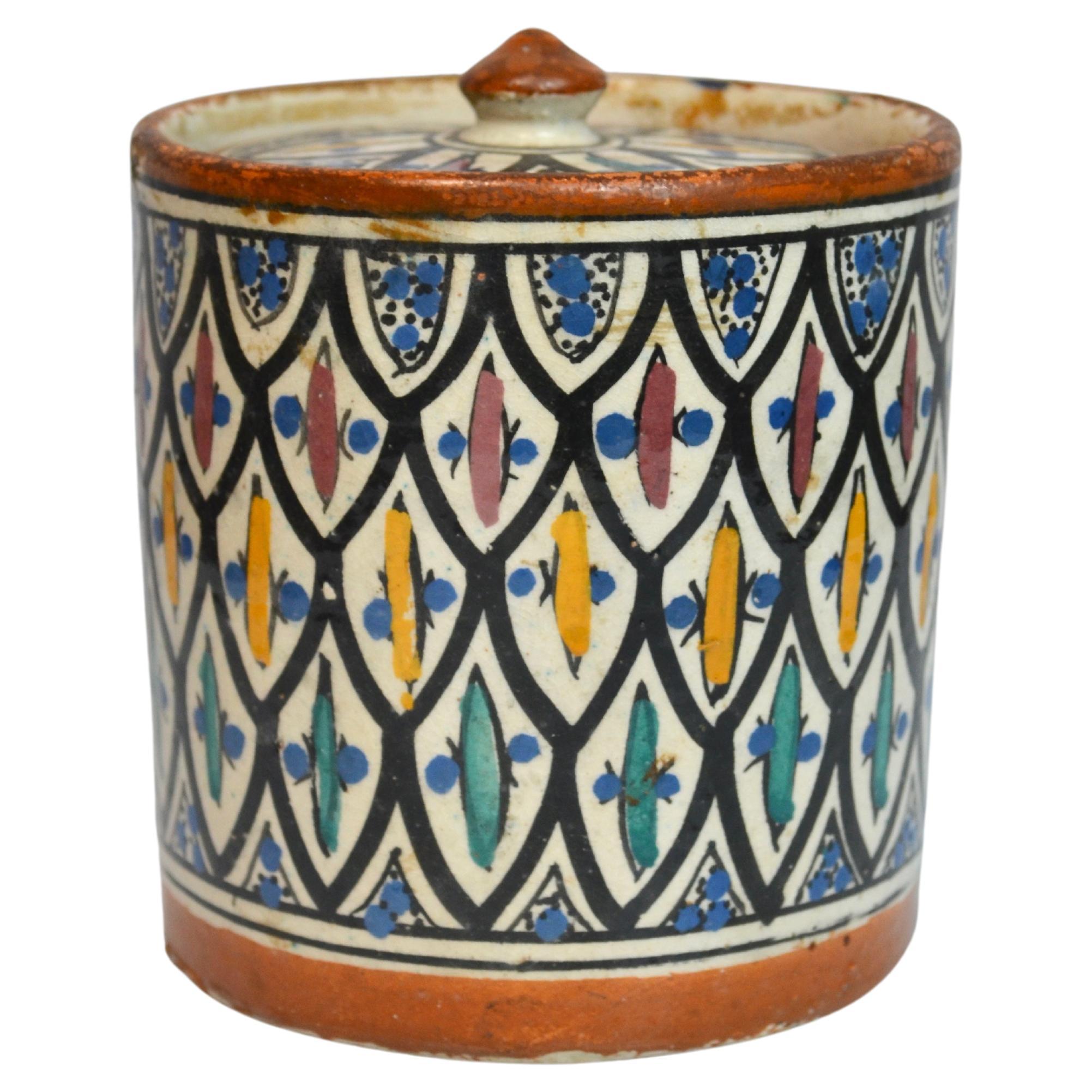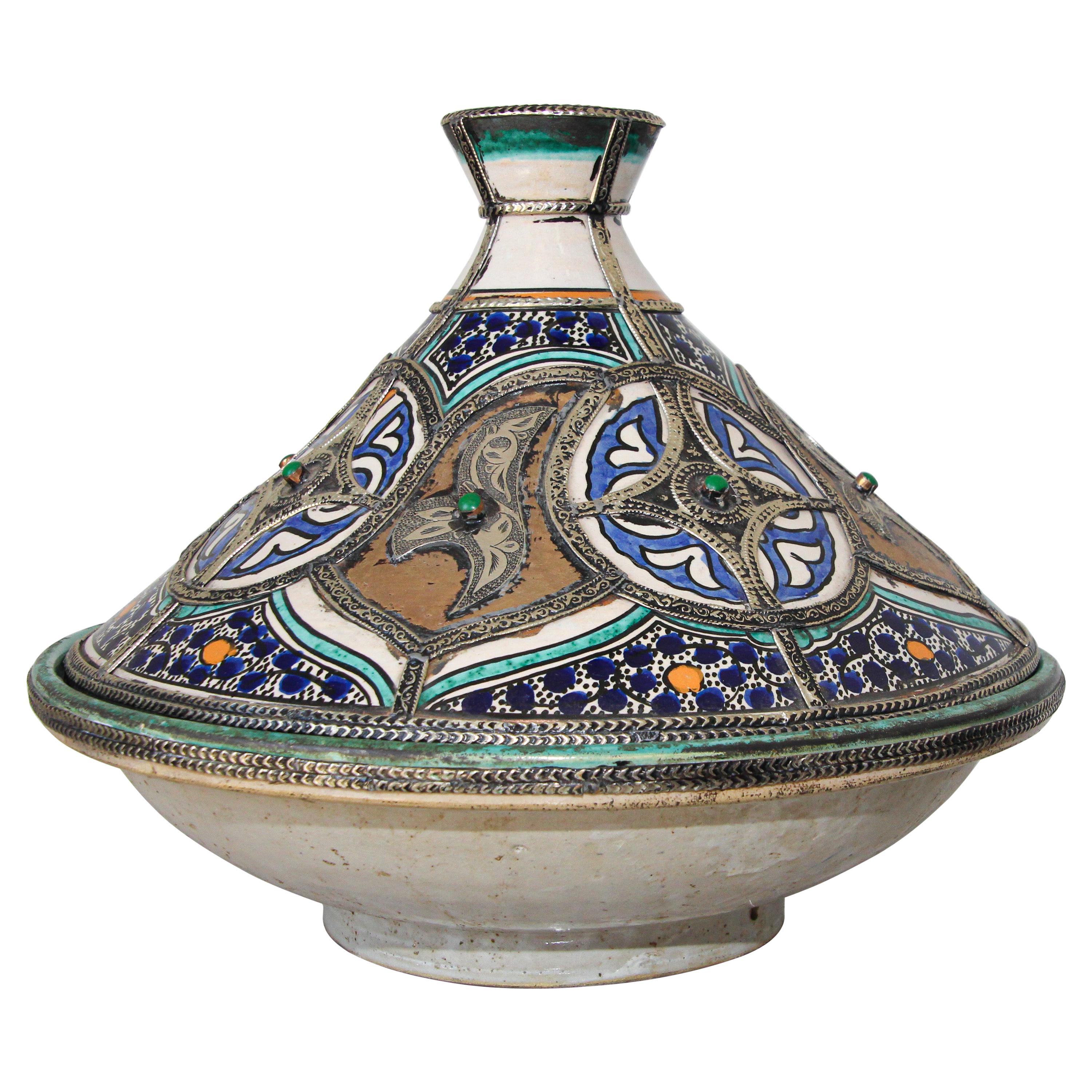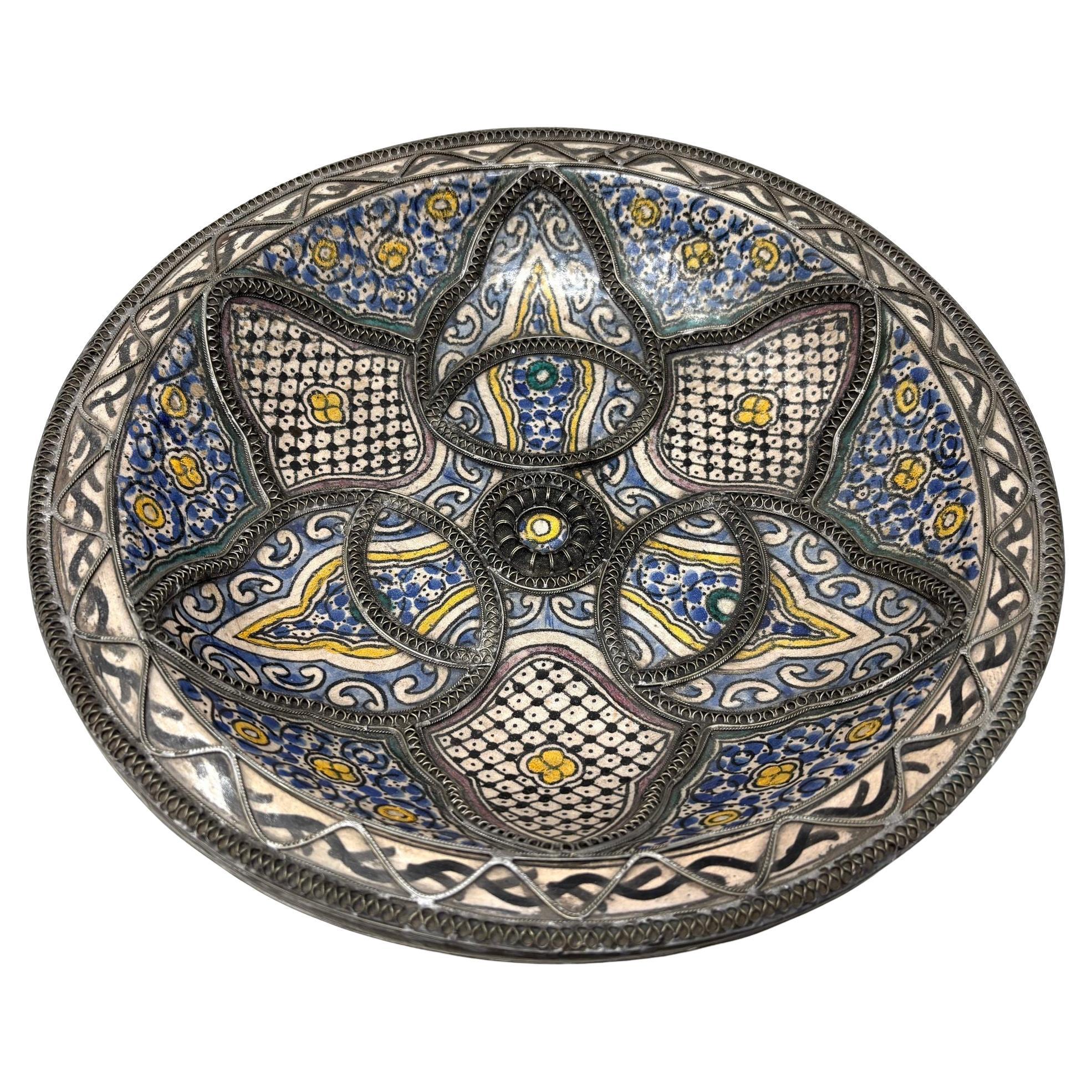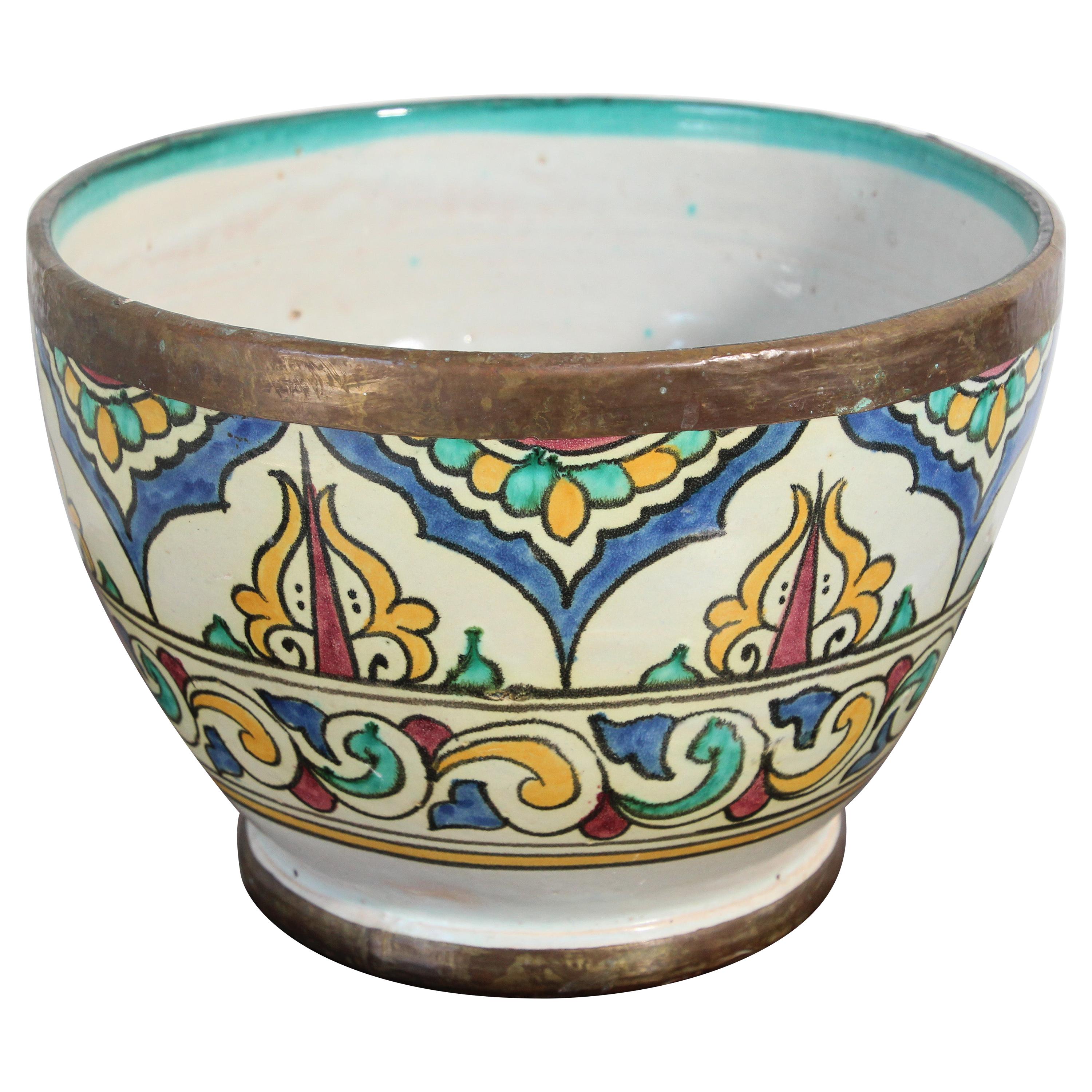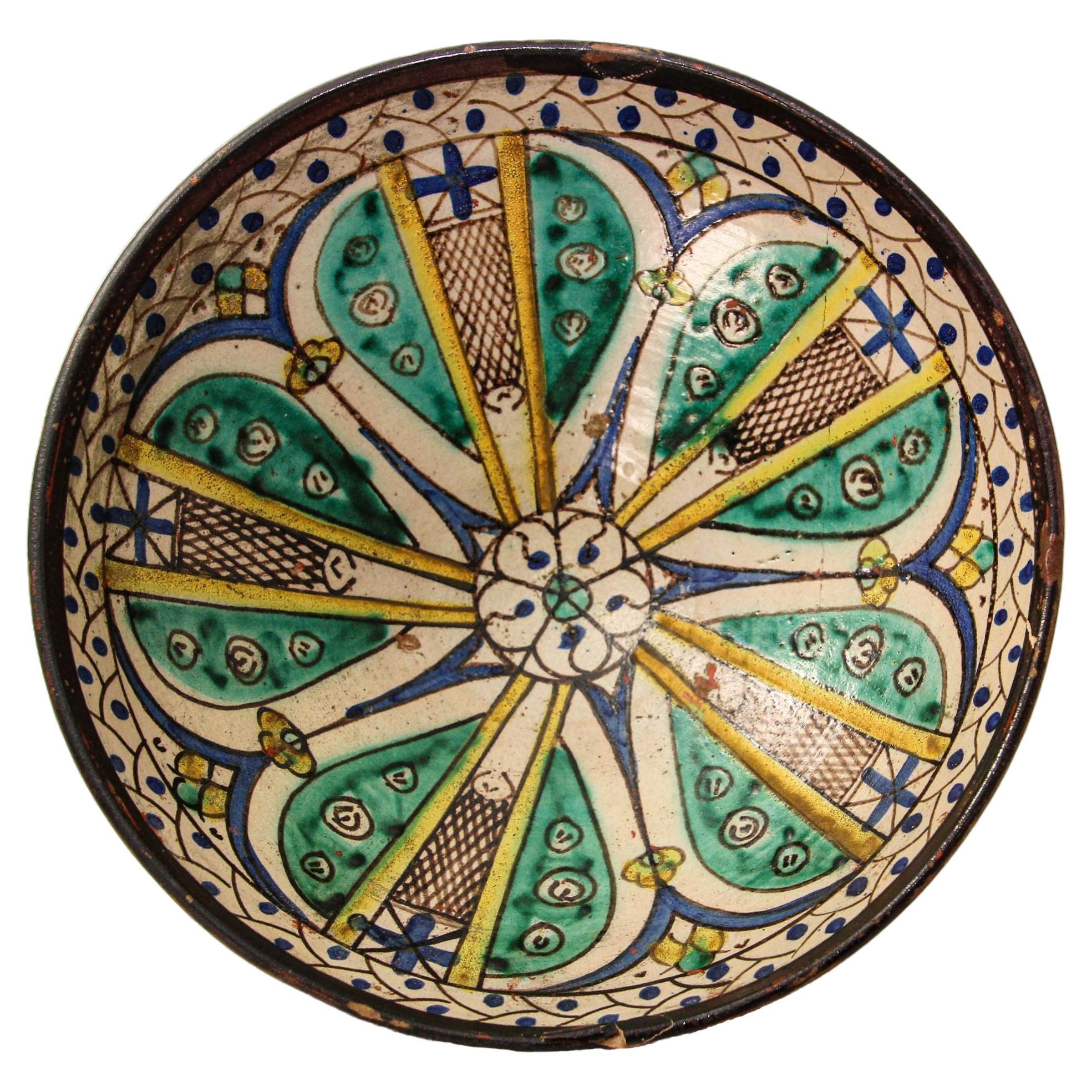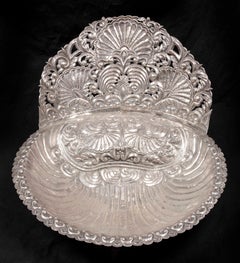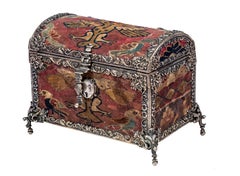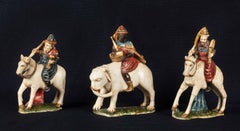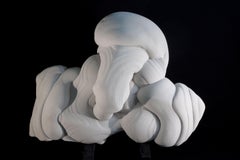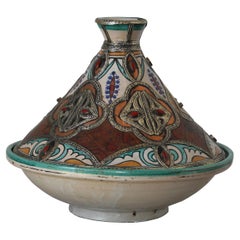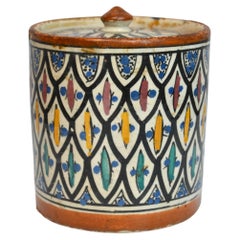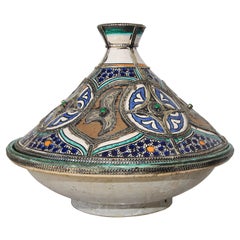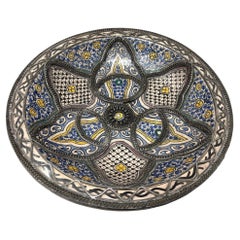Items Similar to Moroccan, Fez or Meknes: Tall bowl (Jobbana) with geometric designs
Want more images or videos?
Request additional images or videos from the seller
1 of 4
UnknownMoroccan, Fez or Meknes: Tall bowl (Jobbana) with geometric designs
$5,750
£4,336.07
€5,014.87
CA$8,067.22
A$8,967.22
CHF 4,700.42
MX$109,511.40
NOK 58,682.06
SEK 55,208.87
DKK 37,429.56
About the Item
Provenance:
Collection of Emily Johnston De Forest and Robert Weeks De Forest, New York, by 1911-until 1942; thence by descent until 2018.
Literature:
Edwin Atlee Barber, Catalogue of the Mexican Maiolica Belonging to Mrs. Robert W. De Forest by The Hispanic Society of America, New York, 1911, p. 64, cat. no. 66 (no 1. only).
This beautifully decorated earthenware pot is a striking example of a 19th-century Moroccan jobbana. Traditionally accompanied by a domed or bell-shaped lid with a finial top, these vessels originally were used to store butter and cheese or to churn milk. The name, jobbana, derives from the Arabic word for cheese—jubna. The exterior of the bowl is decorated with ornamental motifs in bright blue applied over a yellow under-glaze. The organic diamond shapes separated by bands of intricate filigree and geometric patterns mirrored top and bottom are characteristic of ceramicware from Fez and Meknes, as is the reddish color of the clay visible beneath the yellow glaze and in the few areas of small losses. The blue oxide used on vessels of this type allow us to date our jobbana to the middle of the 19th century. An example executed on a similar scale and retaining its original lid is in the Brooklyn Museum (Fig. 1).
This beautifully decorated earthenware pot is a striking example of a 19th-century Moroccan jobbana. Traditionally accompanied by a domed or bell-shaped lid with a finial top, these vessels originally were used to store butter and cheese or to churn milk. The name, jobbana, derives from the Arabic word for cheese—jubna. The exterior of the bowl is decorated with ornamental motifs in bright blue applied over a yellow under-glaze. The organic diamond shapes separated by bands of intricate filigree and geometric patterns mirrored top and bottom are characteristic of ceramicware from Fez and Meknes, as is the reddish color of the clay visible beneath the yellow glaze and in the few areas of small losses. The blue oxide used on vessels of this type allow us to date our jobbana to the middle of the 19th century. An example executed on a similar scale and retaining its original lid is in the Brooklyn Museum (Fig. 1).
- Dimensions:Height: 7.875 in (20.01 cm)Width: 10.5 in (26.67 cm)
- Medium:
- Period:1810-1819
- Condition:
- Gallery Location:New York, NY
- Reference Number:1stDibs: LU1025777991
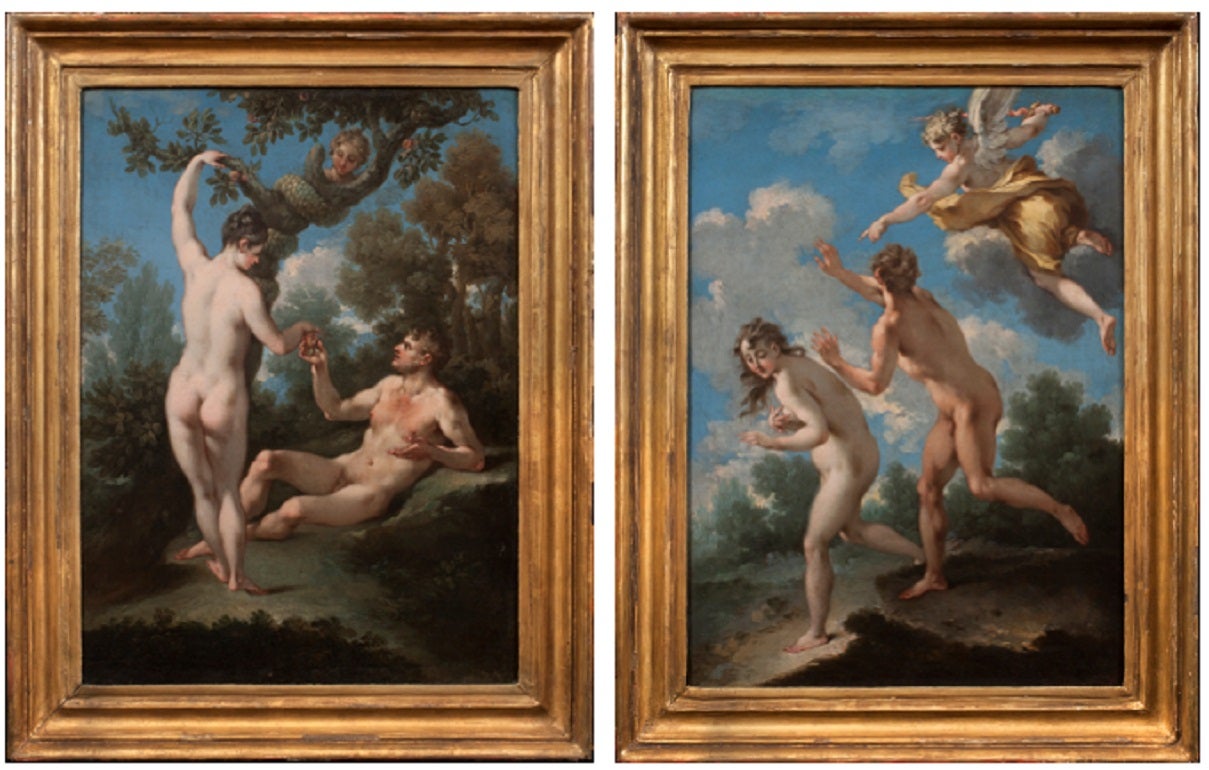
About the Seller
5.0
Recognized Seller
These prestigious sellers are industry leaders and represent the highest echelon for item quality and design.
Established in 1997
1stDibs seller since 2012
22 sales on 1stDibs
Typical response time: 8 hours
- ShippingRetrieving quote...Shipping from: New York, NY
- Return Policy
Authenticity Guarantee
In the unlikely event there’s an issue with an item’s authenticity, contact us within 1 year for a full refund. DetailsMoney-Back Guarantee
If your item is not as described, is damaged in transit, or does not arrive, contact us within 7 days for a full refund. Details24-Hour Cancellation
You have a 24-hour grace period in which to reconsider your purchase, with no questions asked.Vetted Professional Sellers
Our world-class sellers must adhere to strict standards for service and quality, maintaining the integrity of our listings.Price-Match Guarantee
If you find that a seller listed the same item for a lower price elsewhere, we’ll match it.Trusted Global Delivery
Our best-in-class carrier network provides specialized shipping options worldwide, including custom delivery.More From This Seller
View AllCuzco School Baptismal Dish
By Spanish Colonial (Peruvian)
Located in New York, NY
Provenance:
Manuel Ortíz de Zevallos y García, Peru; and by descent in the family to:
Private Collection, New York.
This impressive baptismal dish is an example of eighteenth-cent...
Category
18th Century Old Masters Sculptures
Materials
Silver
Silver and Transitional Andean Textile Casket
By Spanish Colonial (Peruvian)
Located in New York, NY
Silver was the material of choice for both ecclesiastical and domestic vessels in the New World, not only for its status as a precious metal, but also because of its abundance and du...
Category
Early 18th Century Sculptures
Materials
Silver
The Three Magi
Located in New York, NY
Provenance: Private Collection, Spain.
Known as Peruvian alabaster for its translucency and workability, Piedra de Huamanga is a highly prized material from the province of Ayacucho in Peru. In the 17th and 18th centuries, local craftsman in the town of Huamanga began to specialize in the production of small-scale, polychrome religious sculptures made from this distinctive stone. Huamanga sculptures are among the most accomplished examples of carving from the Spanish Americas, where polychrome wood sculpture was a far more common sculptural medium. These works, which were created as independent sculptures or as sculptural groups—such as our three Magi—were intended for ecclesiastical as well as domestics settings.
Our three figures likely formed part of a larger Nativity group—a New World variant of the tradition of the Neapolitan Crèche...
Category
Late 18th Century Figurative Sculptures
Materials
Alabaster
First Journey
Located in New York, NY
Provenance: Sables de Fontainbleau, Seine-et-Marne, France
“Gogottes” are natural creations formed out of sands deposited in Northern France during the Oligocene Period, approximately 30 million years ago. Much later, in a process that has only recently become understood, groundwater rich in silica flowed through the sands...
Category
15th Century and Earlier Naturalistic Abstract Sculptures
Materials
Sandstone
Virgin of Guadalupe
Located in New York, NY
Signed and dated, lower right, Joseph de la Cruz f.t / Año de 88.
Provenance: Private Collection, Santo Stefano d’Aveto (Genoa), ca. 1960–2022.
This monumental canvas is a rare, signed example of one of the most popular subjects of Spanish Colonial, and particularly Mexican, painting: the Virgin of...
Category
Late 18th Century Paintings
Materials
Canvas, Oil
Orientale
By Henri Fantin-Latour
Located in New York, NY
Signed, lower right: Fantin
Provenance:
Gustave Tempelaere (1840–1904), Paris; possibly by descent to his son:
Julien Tempelaere (1876–1961) and with F. & J. Tempelaere, Paris, prob...
Category
1890s Romantic Figurative Paintings
Materials
Canvas, Paper, Oil
You May Also Like
Moroccan Moorish Ceramic Bowl with Lid, Tajine from Fez
By Berber Tribes of Morocco
Located in Moreno Valley, CA
Large Moroccan ceramic decorative serving tajine polychrome with leather, stones and metal overlay with conical overlay lid.
The bottom is a circular ceramic bowl and the top of the tagine is distinctively shaped into a cone.
Handcrafted and hand painted with Moorish designs by artisans in Fez Morocco.
Great decorative Moroccan Folk ceramic...
Category
Mid-20th Century Moroccan Moorish Decorative Bowls
Materials
Ceramic
Moroccan ceramics, Safi
Located in Marinha Grande, PT
Ceramic pot with lid, Morocco - Safi, 30’s/40’s
Signed on the bottom
Category
Vintage 1930s Maghreb Islamic Urns
Materials
Ceramic
Moroccan Ceramic Bowl with Lid Tajine from Fez Polychrome
By Berber Tribes of Morocco
Located in Moreno Valley, CA
Moroccan large ceramic decorative serving bowl tajine polychrome with leather, stones and metal overlay with conical overlay lid.
The bottom is a circular ceramic bowl and the top of the tagine is distinctively shaped into a cone.
Handcrafted and hand painted with Moorish designs by artisans in Fez Morocco.
Great decorative Moroccan Folk ceramic...
Category
Mid-20th Century Moroccan Moorish Decorative Bowls
Materials
Ceramic
Antique Moroccan Moorish Handcrafted Ceramic Bowl Dish from Fez
By Berber Tribes of Morocco
Located in Moreno Valley, CA
Antique handcrafted large Moroccan Moorish polychrome decorative ceramic bowl from Fez.
Bleu de Fez, very nice designs hand painted by artist in Fez.
Antique ceramic handcrafted bowl...
Category
Early 20th Century Moroccan Moorish Decorative Bowls
Materials
Ceramic
Antique Moroccan Ceramic Glazed Bowl Handcrafted in Fez Meknes Jobbana 1900
By Berber Tribes of Morocco
Located in Moreno Valley, CA
Antique large Moroccan handcrafted glazed polychrome ceramic bowl.
Moroccan, Fez or Meknes bowl Jobbana with geometric Moorish designs.
Hand painted ceramic Jubbana bowl, handcrafted by skilled Moroccan artisans in Fez Morocco...
Category
Mid-20th Century Moroccan Moorish Ceramics
Materials
Ceramic
19th C. Moroccan Ceramic Bowl Polychrome Footed Dish Fez
By Berber Tribes of Morocco
Located in Moreno Valley, CA
Antique 19th C. Moroccan Ceramic Bowl Polychrome Footed Dish Fez.
A 19th-century antique ceramic footed bowl from Morocco, Fez, showcases the exquisite artistry of Mokhfia polychrome...
Category
Late 20th Century Moroccan Moorish Decorative Bowls
Materials
Ceramic
More Ways To Browse
Mexico Tin
Milk Diamonds
Antique Tin Mirrors
Barbers Mirror
Mexican Antique Mirror
Antique Milk Churns
Antique Mexican Pots
Barbers Bowl
Moroccan Filigree Bowl
Balloon Swan
Bearbrick Basquiat 1000
Ferdinando Codognotto
Francisco Ribera Gomez Painting
Inbar Tolla
John Roper Sculpture
Kaws Bff Black
Picasso Madoura Bird
Ruan Hoffmann
